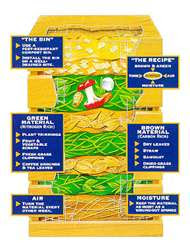 |
| February kitchen garden |
Saturday, January 30, 2016
You can get a jump on the garden by starting seeds indoors. It is easy and a budget friendly option that allows you to grow many varieties not available at your neighborhood nursery or big box store. Besides, it is nice to have green things growing again!
10-12 weeks prior (end Jan/beginning of Feb in our Zone 6 garden)
Artichokes
Broccoli
Cabbage
Celery
Endive
Escarole
Kale
Mache
8-10 weeks prior (mid-February in our Zone 6 garden)
Chamomile
Chives
Eggplant
Lavender
Leeks
Lovage
Parsley
Peppers
Rosemary
Tomatoes
Thyme
For a full seed starting calendar, Indoor Seed Starting Calendar
 |
| Aerogarden for seed starting |
What are the tricks to successful seed starting? The most surefire I have found with a gadget is the Aerogarden with the seed starting tray. I have almost 100% germination rate with it.
The key is using sterile seed starting mix, pots and containers. You can make your own seed starting mix with peat moss or coir (renewable), compost, and vermiculite. Just be sure to heat the compost to at least 150 degrees to kill any pathogens before using to start seeds.
Place the seeds in the starter mix in the pots and wet thoroughly from the bottom (watering from the top can dislodge seeds). After fully saturated, they are ready to put in a catch pan. Make sure any catch pan that you use has been thoroughly washed in a bleach solution so all pathogens are killed. The one I just bought has a water reservoir in the bottom of it that wicks the moisture up under the seedlings.
I put my seed starts in a plastic tray with a clear plastic lid in a sunny window that I have had for years that you can buy at any big box store. Keep moist, but not wet, and with the clear cover on until seedling emerges. Once seedling emerges, remove the clear lid.
 |
| Seed tray starter kit |
Make sure you label your seedlings as soon as you plant them; you may think you will remember 2 months from now what was where, but likely not. Now is also a great time to start keeping a journal. Start tracking what you planted when so you can review next year what worked well to repeat and what didn’t work so well to tweak.
Your seedling’s first leaves are not “true” leaves; think of them as baby teeth. The second sets of leaves are their true leaves. They are ready to be hardened off when they have their first set of true leaves. Seedlings must be hardened and not just thrown outside. You take them out a little at a time, gradually increasing their exposure to sun and cold, only during the daytime. I try and plant when there is a warm spell forecasted to minimize the shock.
There are great selections of herbs and veggies at nurseries and big box stores nowadays so you have great options just waiting until spring is officially here and picking up what looks good at your nearby store in a couple of months. This is also a great back up if your first seed starting adventure goes a little awry...........
For different garden ideas, here are some to choose from: Heirloom Sicilian kitchen garden, Small space French kitchen garden, Start a kitchen herb garden!
 |
| Garden planning |
Happy garden starting!

















